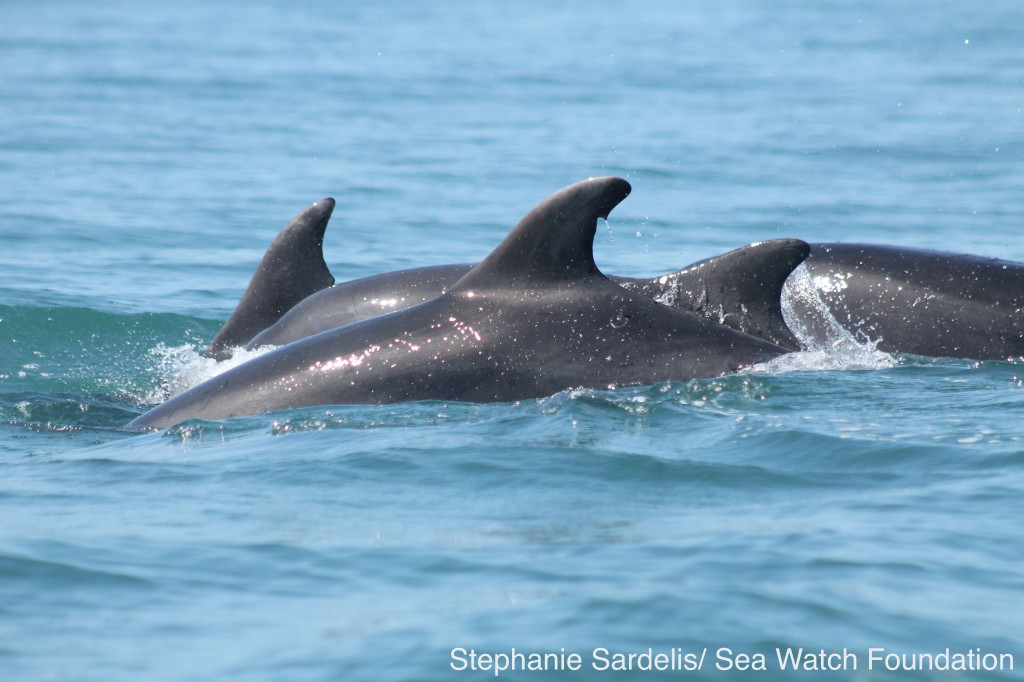Written by Valentin Neamtu 22nd May 2015
This week marked the first line transect survey of the season for us here at the Sea Watch Foundation in New Quay. During a line transect survey we go out on a boat in a straight line in a given area and record how many dolphins and other cetaceans that we come across. We also then take pictures of them so that we can use Photo-ID methods to identify individuals. Line transect surveys are a common practice for cetacean monitoring not just in the UK but throughout the world. These surveys in conjunction with Photo-Id are very important for understanding where and when cetaceans move.
Another plus is that sometimes during a survey we get to see some very spectacular sights. Such as this incredible sighting of a pod of bottlenose dolphins that came and swam up right next to the boat.
If we’re sharp and have the camera’s rolling we can get awesome footage like this:
The greatest part about this footage is that this was recorded while we were conducting important research on dolphins.
Cardigan Bay is a very important area for bottlenose dolphins especially for nursing mothers. The importance of this area has allowed the creation of two Special Areas of Conservation (SAC’s). Strict guidelines and rules are enforced in SAC’s because they are important for protecting cetaceans from things that may harm them such as bycatch or boat strikes. These SAC’s were created primarily because of the effort by scientific organisations such as the Sea Watch Foundation to designate important areas for cetaceans. Line transects and Photo-ID methods allow organisations to calculate the whereabouts of dolphins and other cetaceans. With the data collected from them they can determine what areas are important for them.
New Quay is an important place for dolphins and the enforcement of the marine conduct code in the area allows for the dolphins to keep returning. Some of you may have noticed a rather large dolphin with a white tipped fin that frequently visits New Quay harbour. His name is Graham, named after the resident skipper of the Dunbar Castle II, and his continued visits to the harbour are great for us and for people who come to watch dolphins. To keep Graham here we have to be respectful of the marine conduct code enforced by the rules of the SAC. The more we protect the dolphins the more we get to see of them.
It’s not only the scientific organisations that can help protect dolphins and cetaceans in UK waters. There is a national sightings database where people from all around the UK can record their sightings of cetaceans. This information is very important in understanding where cetaceans are throughout the UK and can lead to the creation of larger and better regulated SAC’s. So if you have a sighting please do your part in helping protect one of our most beloved animals.
You can report your sightings here.


























